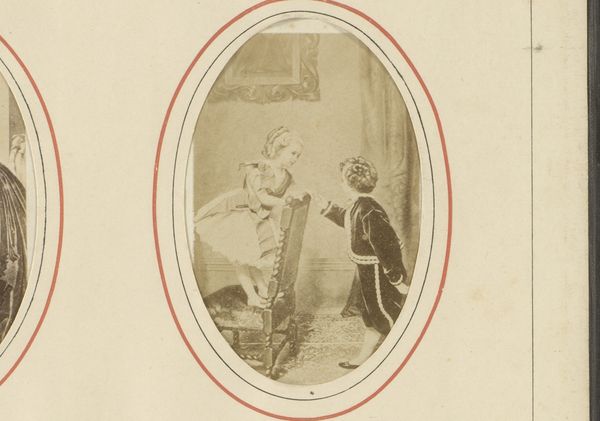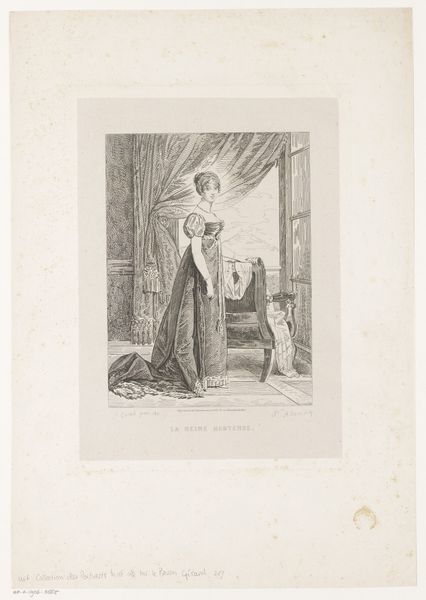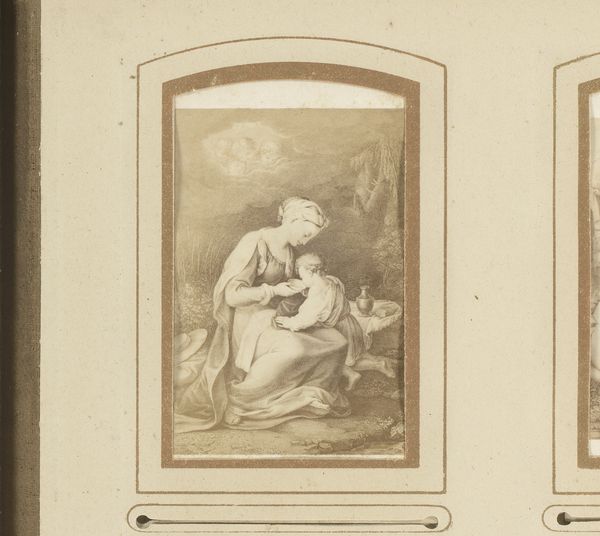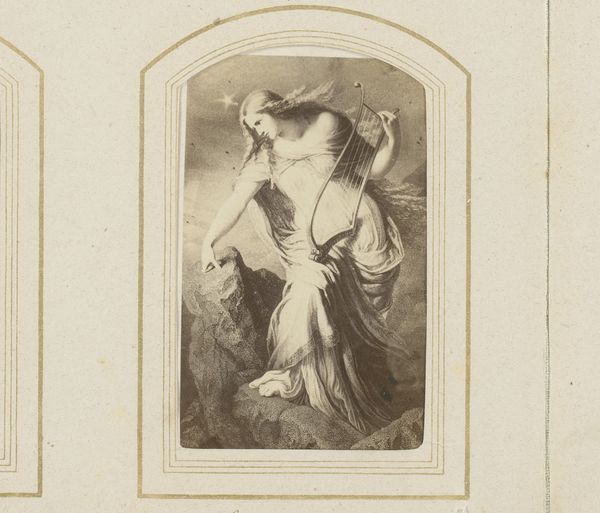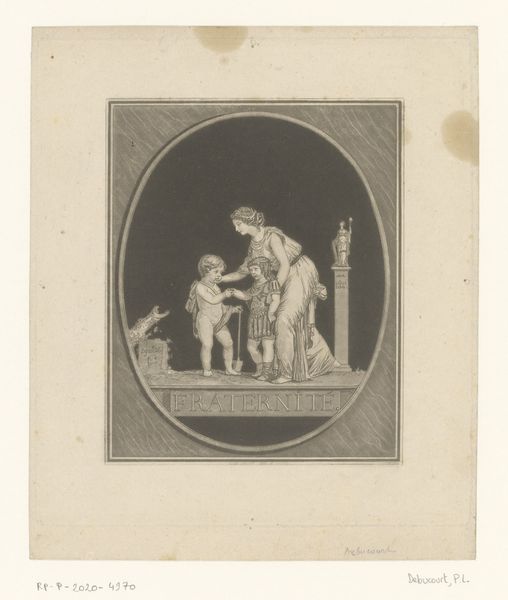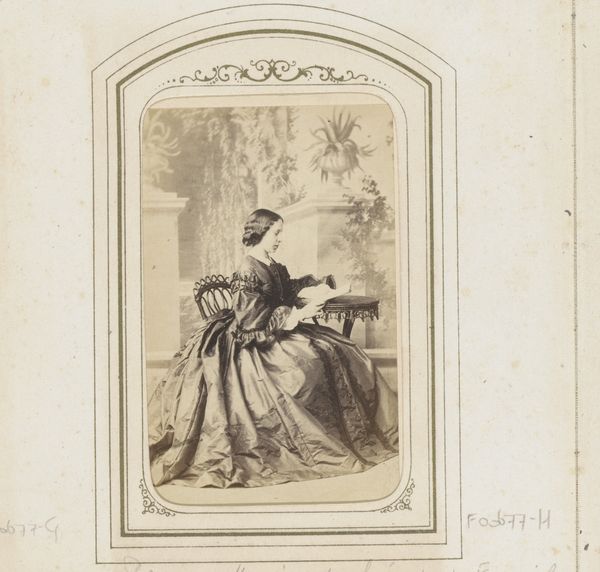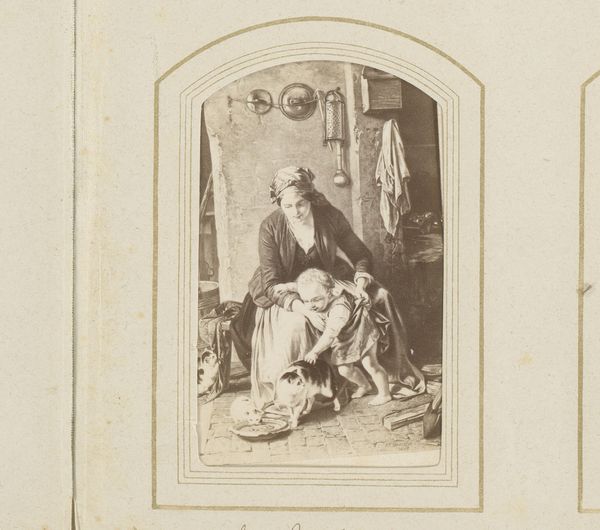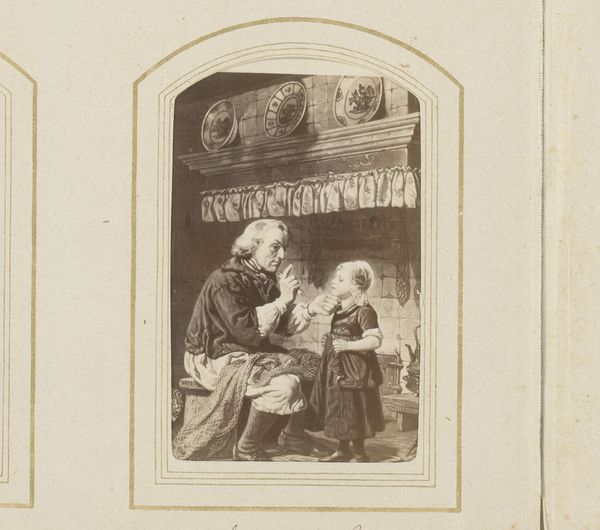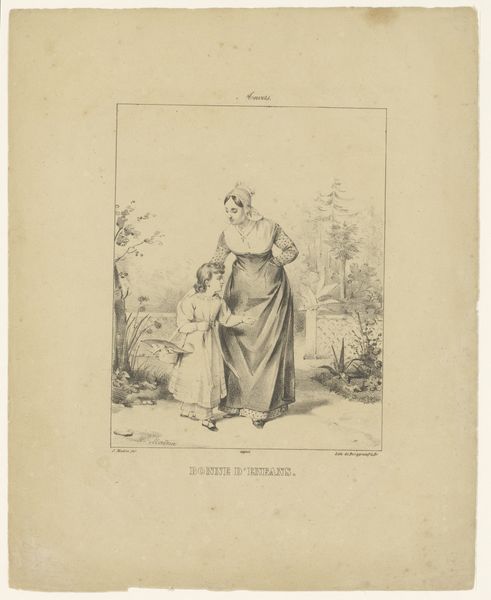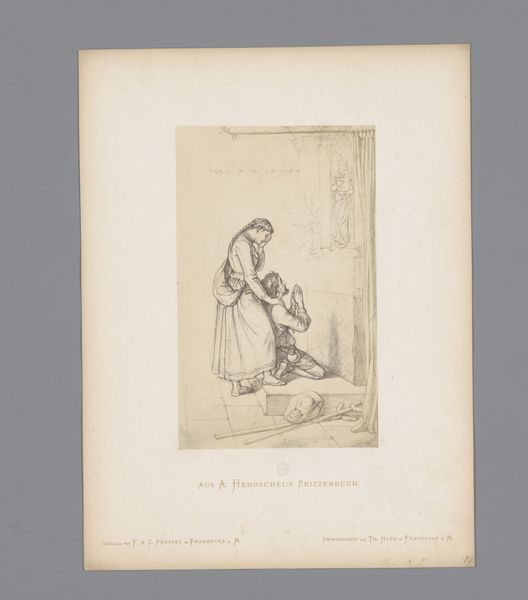
Fotoreproductie van een schilderij van Miss Lily met een dienstmeid, door James Hayllar c. 1870 - 1890
0:00
0:00
photography
#
portrait
#
photography
#
genre-painting
#
realism
Dimensions: height 101 mm, width 63 mm
Copyright: Rijks Museum: Open Domain
Curator: Welcome. We are looking at an albumen print dating from approximately 1870 to 1890. The piece is titled "Fotoreproductie van een schilderij van Miss Lily met een dienstmeid, door James Hayllar"— a photographic reproduction of a painting of Miss Lily with a maid, by James Hayllar. Editor: What strikes me immediately is the staged quality of the photograph, how meticulously it imitates the painterly style. The soft, diffuse light and muted tones contribute to its gentle mood and quiet domesticity, really like stepping into a bourgeois painting of the period. Curator: Precisely! The photograph employs composition and light to emulate a painted portrait, note the classic oval frame enhancing the aesthetic appeal of genre painting. It creates a structured narrative space. Editor: Absolutely. One might consider how photography's rise redefined artistic labor. Here, we have the photographic process seemingly attempting to elevate itself to the realm of painting, which requires acknowledging the labour, the materiality, of both processes involved in crafting this particular representation. I'd even ask, what socio-economic messages are inherent? Curator: Indeed. In mimicking the pictorial style, the photograph highlights both the technical capabilities of photography at the time, its tonal range and sharpness, and questions the distinction between high art and reproductive technology. Note, if you will, how the detail, particularly the textiles, create their own formal dynamics. Editor: Thinking about labour practices and the cultural impact, wouldn’t that circulation reshape perceptions and, to some extent, commodify domestic interactions? The image invites a certain gaze on both Lily's upbringing and her servant’s position. Curator: An insightful point. In essence, while focusing on formal qualities reveals how photography navigates and interprets social status and art history through the strategic mimicry, your materialist critique encourages broader, challenging reflections of the time. Editor: Precisely, recognizing how material conditions inevitably influence aesthetic and representational strategies, to reveal layers of interpretation, not visible at first glance. Curator: Both aspects certainly bring deeper value to our understanding and appreciation of the work, demonstrating an exciting interaction between image and commentary.
Comments
No comments
Be the first to comment and join the conversation on the ultimate creative platform.
